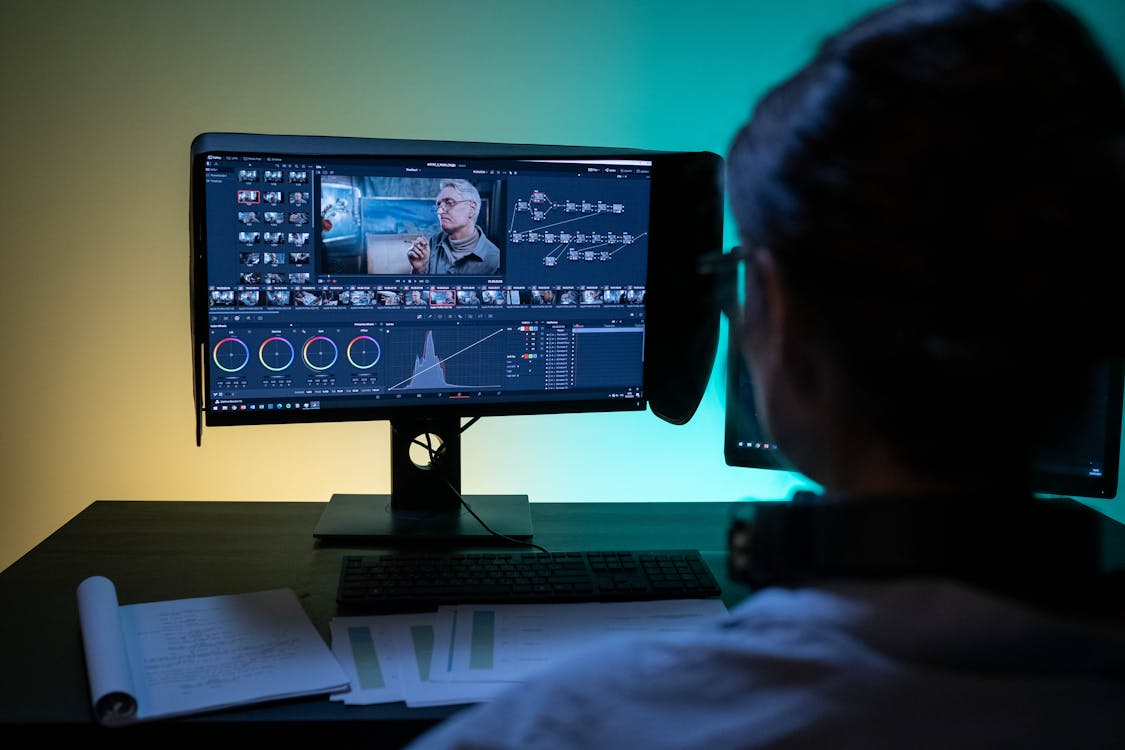The gaming industry is a global phenomenon, with players from diverse linguistic and cultural backgrounds engaging with titles across borders. To succeed in this expansive market, developers must prioritize internationalization (i18n)—the process of designing software to be adaptable to various languages and regions without requiring significant engineering changes. Effective i18n lays the foundation for seamless localization (l10n), enabling games to resonate with players worldwide while keeping costs and development time manageable. By examining best practices in i18n and drawing on examples from hit games like Among Us and Genshin Impact, this article explores how developers can prepare their games for global markets.
What is Internationalization and Why Does It Matter?
Internationalization is the proactive step of building a game’s architecture to support multiple languages, cultural norms, and regional requirements from the outset. Unlike localization, which involves translating and adapting content for specific markets, i18n ensures the game’s framework is flexible enough to accommodate these adaptations without extensive reengineering. This approach is critical because retrofitting a game for localization after development is often costly, time-consuming, and prone to errors.
For instance, a game designed without i18n might hardcode text strings in English, making it difficult to swap them for Japanese or Arabic without rewriting code. Similarly, a rigid user interface (UI) might not accommodate languages with longer text lengths, like German, or right-to-left (RTL) scripts, like Arabic. By embedding i18n principles early, developers can streamline localization, reduce costs, and deliver a polished experience to players worldwide.
Key i18n Practices for Game Development
1. Use Unicode for Text Encoding
Text is at the heart of any game’s narrative, menus, and UI. To support diverse languages, including those with non-Latin scripts like Chinese, Arabic, or Russian, developers must adopt Unicode (UTF-8 or UTF-16) as the standard for text encoding. Unicode ensures that characters from virtually all writing systems are displayed correctly, avoiding garbled text or missing glyphs.
Genshin Impact, developed by miHoYo, exemplifies this practice. The game supports languages as varied as English, Chinese (Simplified and Traditional), Japanese, Korean, and Arabic, among others. By using Unicode, Genshin Impact ensures that its intricate dialogue, item descriptions, and UI elements render accurately across scripts. For example, the game’s Arabic localization handles RTL text seamlessly, maintaining readability and aesthetic consistency.
Best Practice: Always use Unicode-compatible fonts and test text rendering early in development. Avoid embedding text directly in code; instead, store strings in external resource files for easy translation.
2. Design Flexible and Dynamic User Interfaces
A game’s UI must adapt to the nuances of different languages. Some languages, like German, use longer words, requiring more screen space, while others, like Chinese, may need less. Additionally, languages with RTL scripts require mirrored layouts. A rigid UI can break when text expands or flips, leading to clipped text or misaligned elements.
Among Us, developed by InnerSloth, demonstrates the value of a flexible UI. The game’s minimalist interface—featuring simple menus and task descriptions—adapts well to multiple languages. For instance, the concise English phrase “Swipe Card” translates to longer equivalents in other languages, like “Deslizar Tarjeta” in Spanish. By using dynamic text boxes and scalable UI elements, Among Us ensures that translations fit without requiring layout overhauls.
Best Practice: Use relative positioning and scalable containers for UI elements. Test layouts with “pseudo-localization” (e.g., replacing English text with longer or RTL dummy text) to identify potential issues early.
3. Externalize and Contextualize Text Strings
Hardcoding text in a game’s source code is a recipe for localization headaches. Instead, developers should externalize all translatable strings into resource files (e.g., JSON, XML, or .po files). This allows translators to work on text without touching the codebase. Additionally, providing context for each string—such as where it appears in the game or its tone—helps ensure accurate translations.
Genshin Impact uses externalized strings extensively, given its narrative-heavy gameplay. The game’s dialogue, which varies by character and context, is stored in separate files with metadata indicating speaker, tone, and context. This approach enabled miHoYo to localize the game into 15+ languages efficiently, maintaining the story’s emotional impact across cultures.
Best Practice: Use a localization management system (e.g., Crowdin, Transifex) to organize strings and provide translators with context. Avoid concatenating strings dynamically, as word order varies by language.
4. Support Cultural Adaptability
Beyond language, i18n involves preparing for cultural differences, such as date formats, number systems, and content sensitivities. For example, a game featuring a competitive leaderboard might need to adjust its ranking system to align with cultural preferences for collectivism versus individualism.
Among Us handles cultural adaptability by keeping its core mechanics universal—social deduction and teamwork transcend cultural boundaries. However, the game’s community guidelines and chat filters are localized to account for regional norms, ensuring that inappropriate content is flagged appropriately in each market.
Best Practice: Research target markets early to identify cultural nuances. Design modular systems for elements like dates, currencies, or sensitive content, allowing easy customization during localization.
5. Plan for Scalable Voice Acting and Audio
Voice acting is a significant part of many games’ appeal, but recording in multiple languages can be expensive. i18n can reduce costs by planning for voice-over flexibility. For example, separating voice audio from background music and sound effects allows developers to swap language tracks without reworking the entire audio pipeline.
Genshin Impact excels in this area, offering voice-overs in English, Chinese, Japanese, and Korean. By structuring audio assets modularly, miHoYo can update or add language tracks without disrupting the game’s sound design. This modularity also supports players who prefer mismatched audio and text languages (e.g., Japanese voice with English subtitles).
Best Practice: Use separate audio channels for voice, music, and effects. Include subtitles as a fallback to reduce reliance on voice acting in smaller markets.
Lowering Localization Costs and Time
Effective i18n directly reduces the cost and time required for localization. Here are practical strategies to achieve this, illustrated with examples from Among Us and Genshin Impact:
-
Start Early: Both games incorporated i18n from the initial design phase. Among Us launched with limited languages but used a modular codebase, allowing rapid expansion to 20+ languages as its popularity grew. Starting i18n early avoids costly retrofits later.
-
Automate Testing: Use automated tools to check for text overflow, missing translations, or encoding issues. Genshin Impact likely employs such tools to ensure its frequent updates, which include new dialogue, are error-free across languages.
-
Leverage Translation Memory: Tools like CAT (Computer-Assisted Translation) systems store previously translated phrases, reducing redundant work. Genshin Impact benefits from this, as recurring terms like “Primogems” or “Teyvat” are translated consistently across updates.
-
Engage Native Translators: Both games use native speakers to ensure translations capture cultural nuances. For example, Among Us localizes slang like “sus” (suspicious) appropriately, maintaining its playful tone in languages like French (“louche”) or Spanish (“sospechoso”).
-
Iterate Based on Feedback: Post-launch, both games have refined their localizations based on player feedback. Genshin Impact has adjusted translations for clarity in response to community input, demonstrating the value of ongoing localization efforts.
Challenges and Considerations
Despite its benefits, i18n presents challenges. Small studios like InnerSloth may lack the resources to implement robust i18n upfront, as Among Us initially launched with limited language support. Similarly, cultural missteps can occur if developers overlook regional sensitivities—Genshin Impact faced criticism for certain character designs, requiring adjustments in specific markets.
To mitigate these challenges, developers should prioritize key markets based on player demographics and revenue potential. For example, Among Us focused on English, Spanish, and Portuguese early on, covering a large portion of its player base. Additionally, partnering with experienced localization firms can bridge resource gaps for smaller teams.
Internationalization is not just a technical requirement but a strategic investment in a game’s global success. By adopting Unicode, designing flexible UIs, externalizing strings, supporting cultural adaptability, and planning for scalable audio, developers can create games that are ready for localization from day one. Among Us and Genshin Impact illustrate how thoughtful i18n enables rapid, cost-effective localization, allowing games to connect with players worldwide. As the gaming industry continues to grow, embracing i18n will be essential for developers aiming to capture the hearts—and screens—of a global audience.











